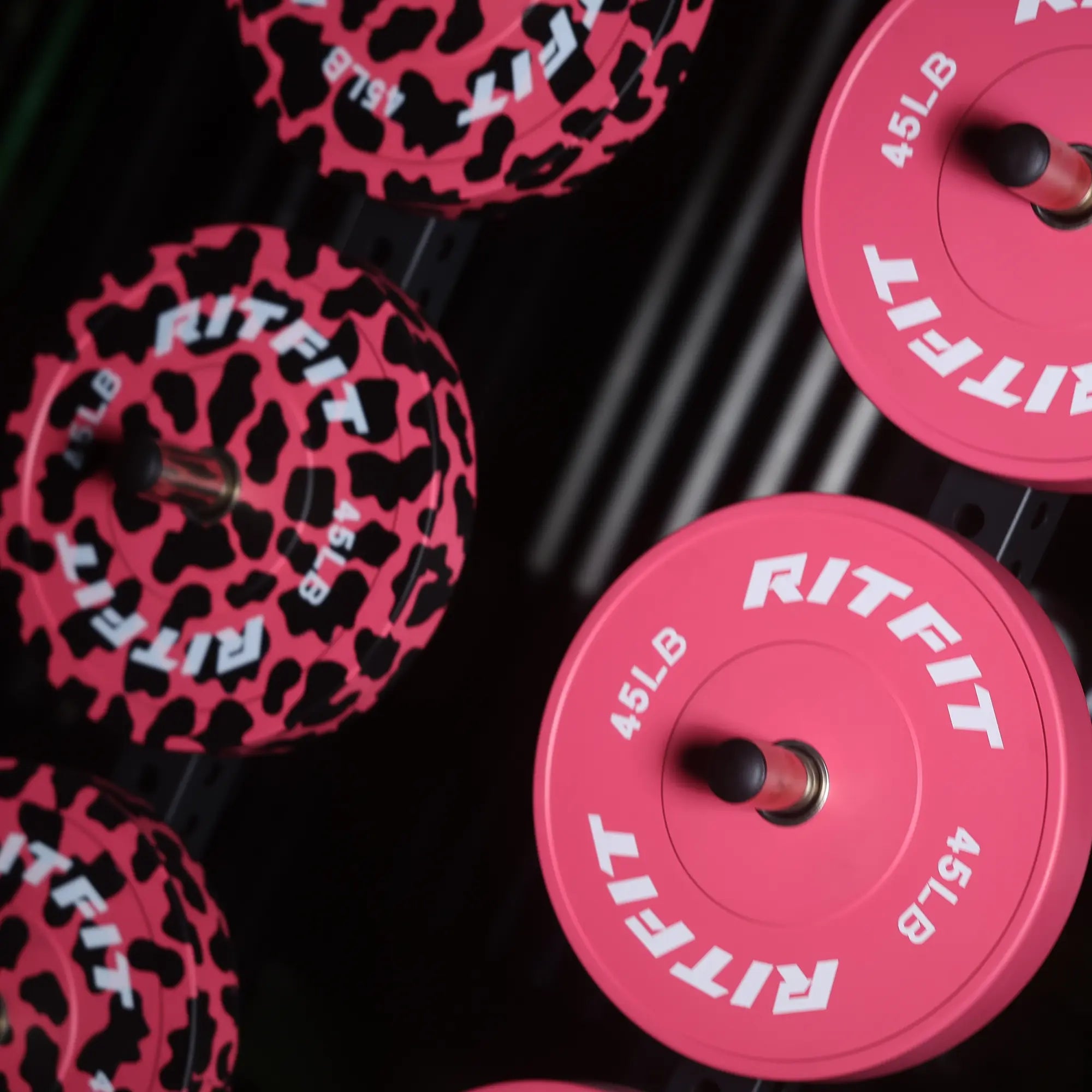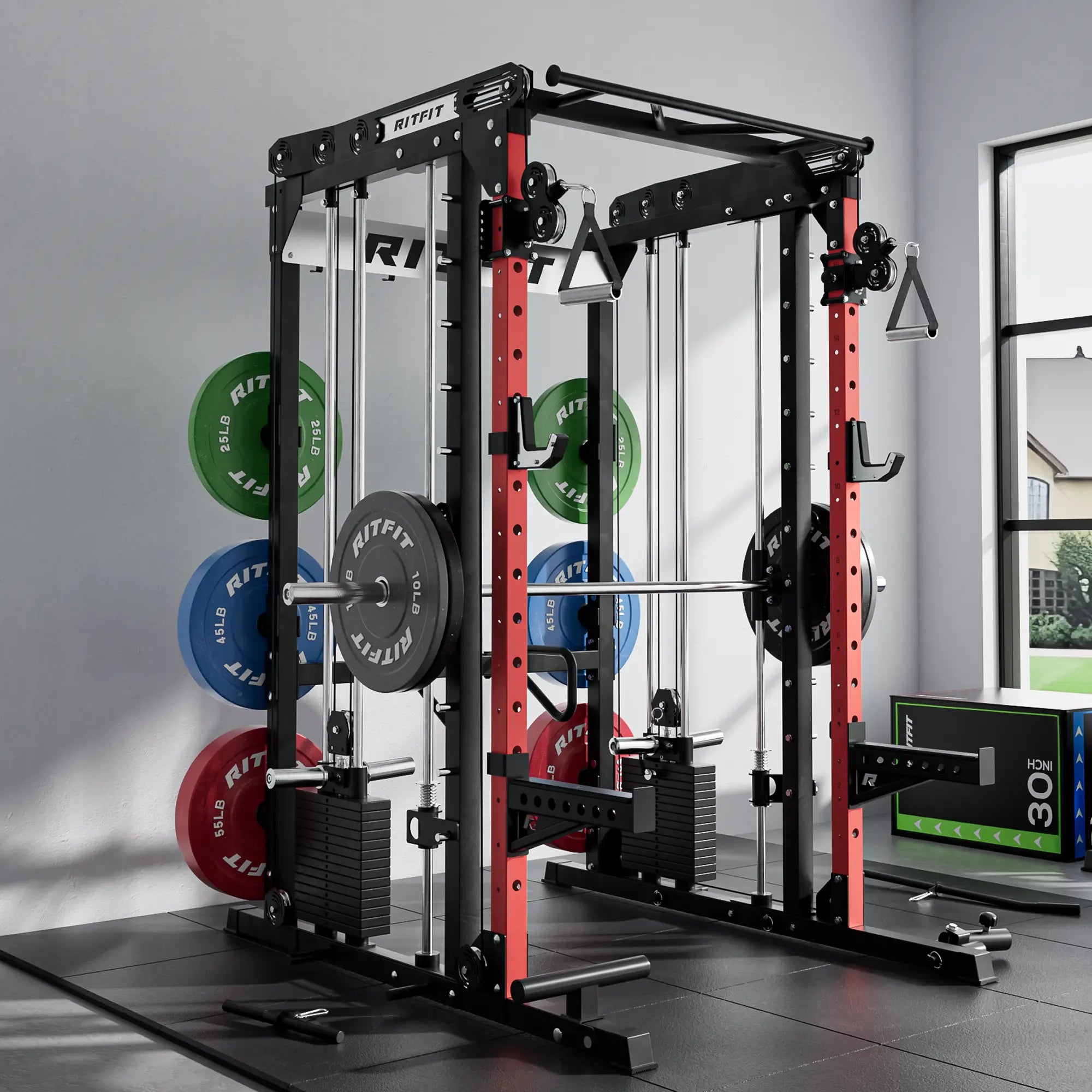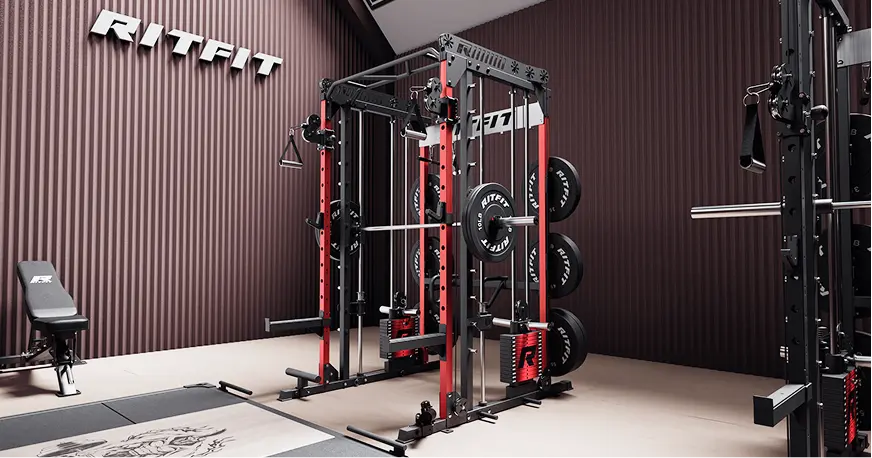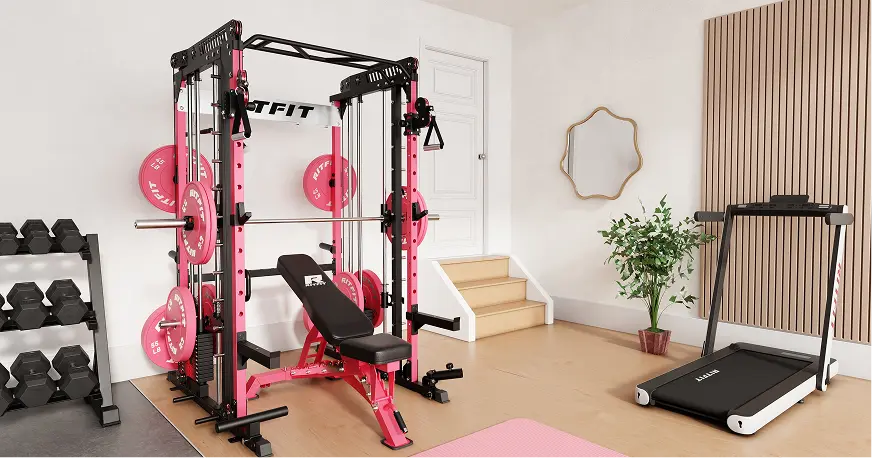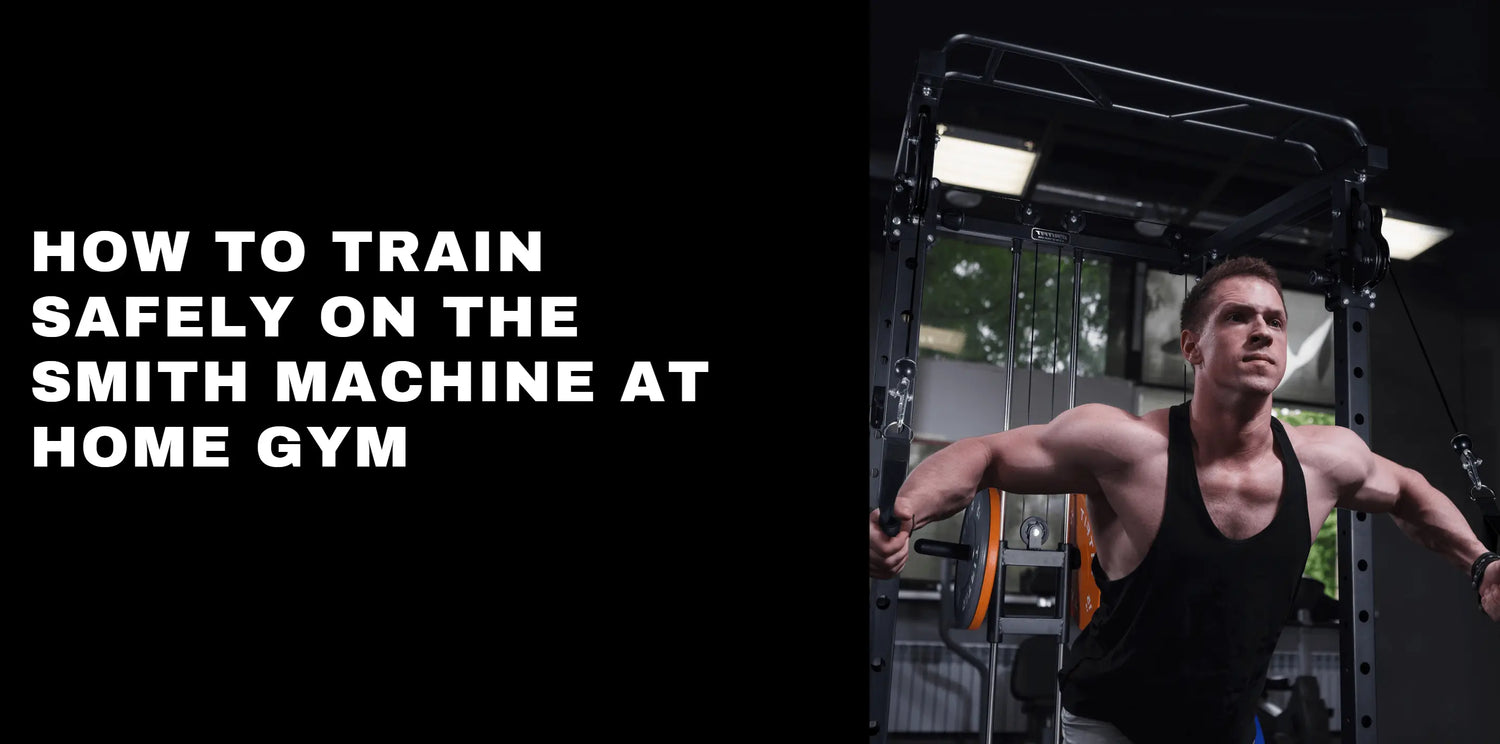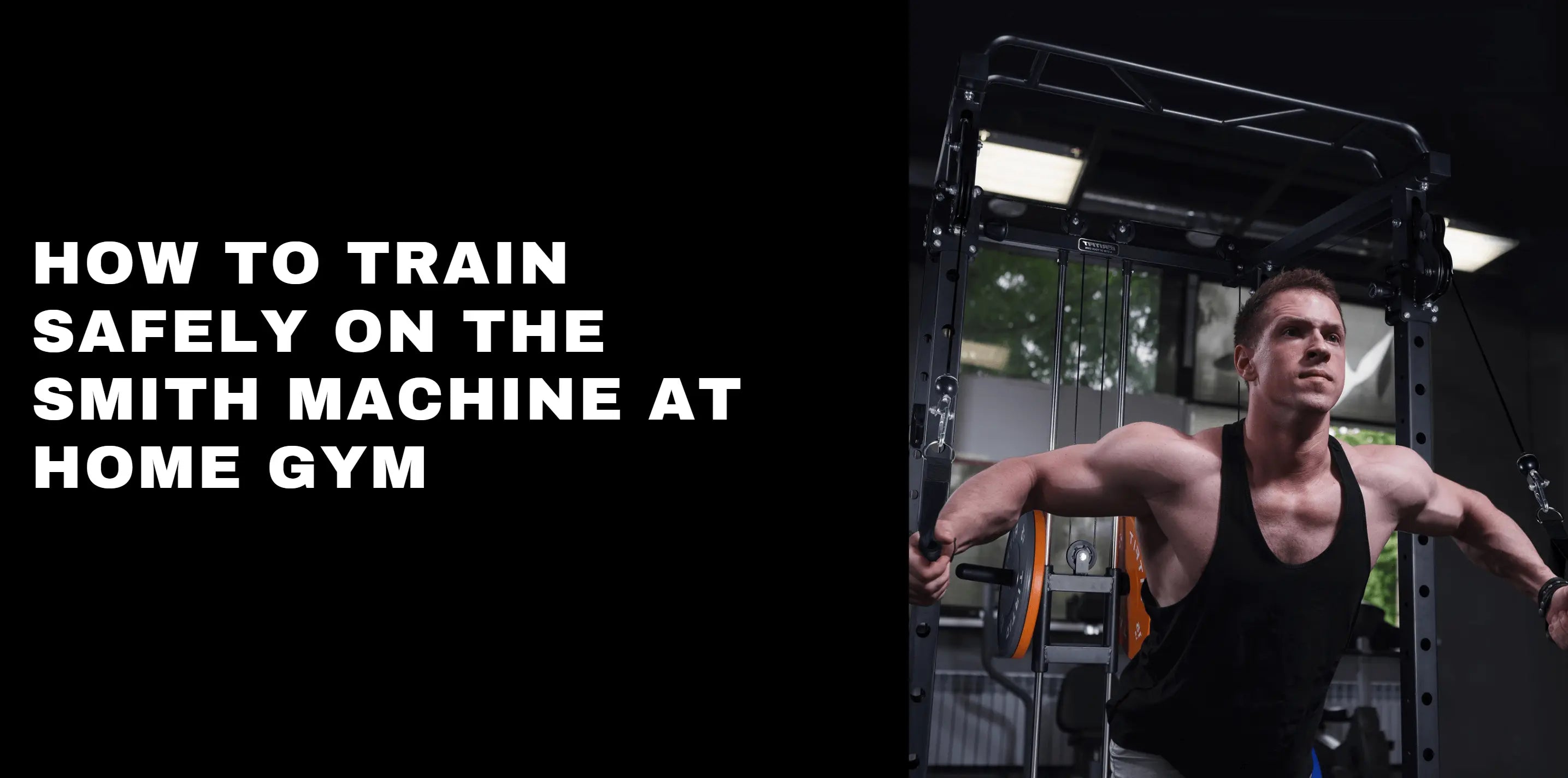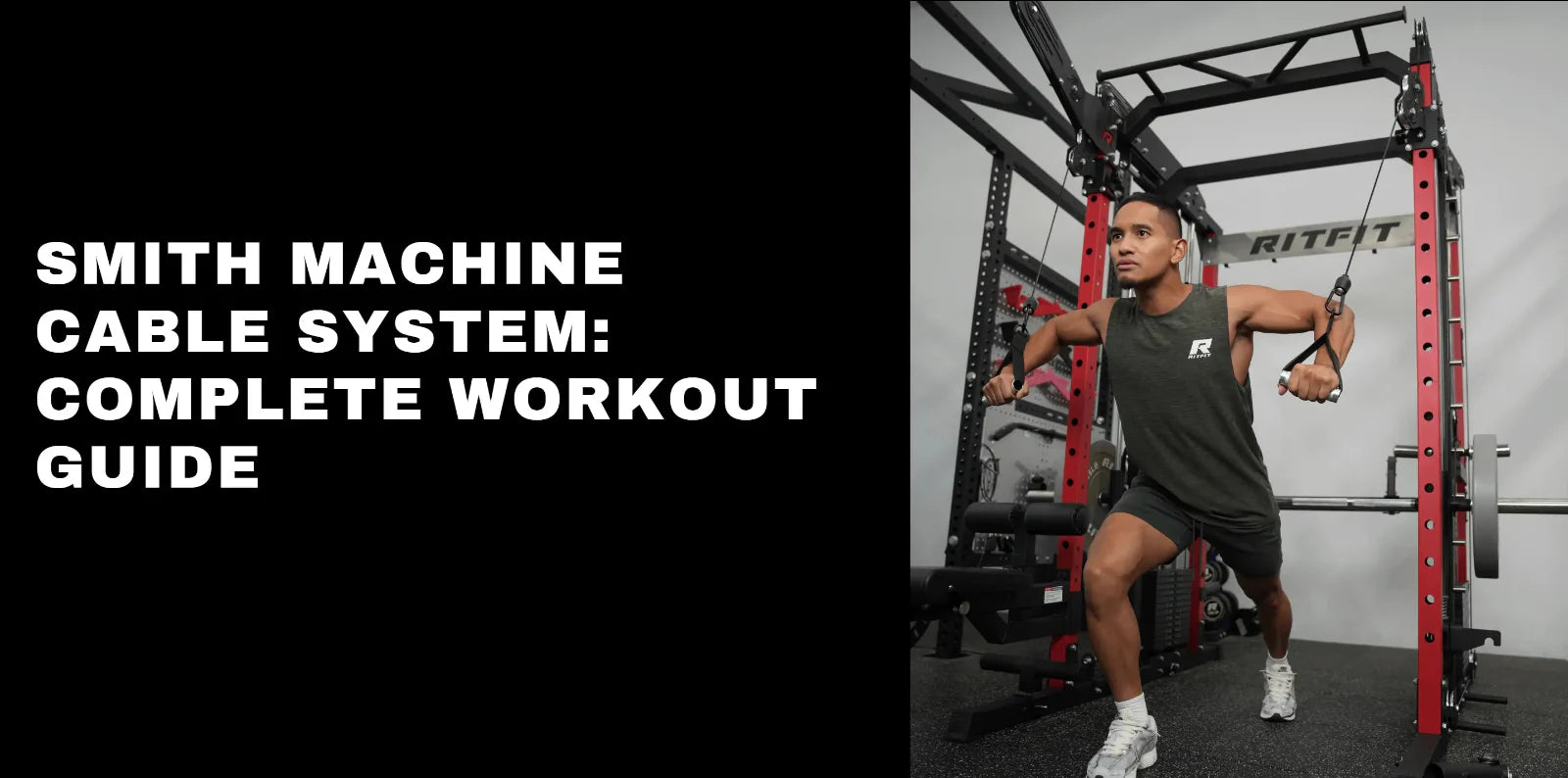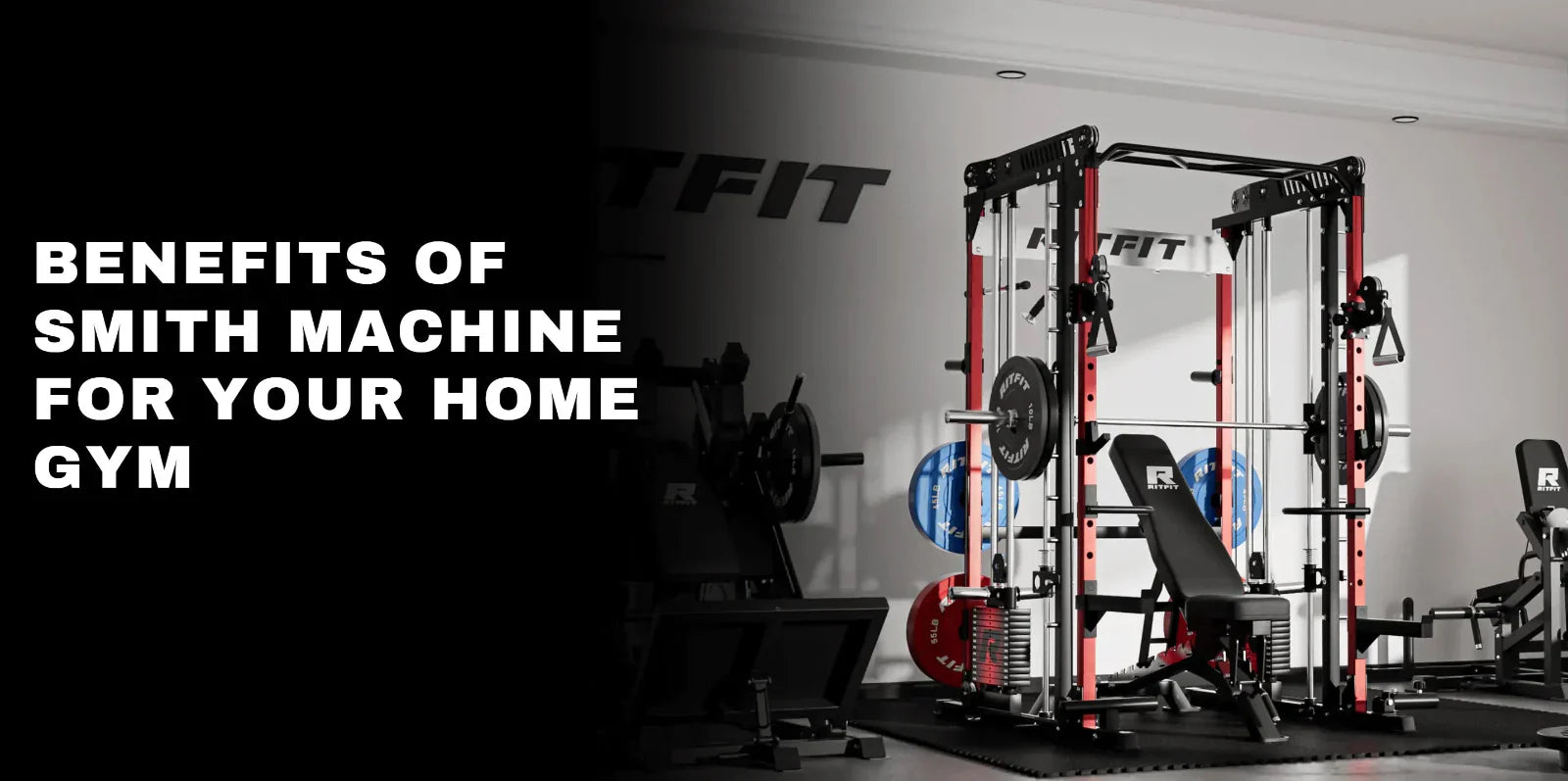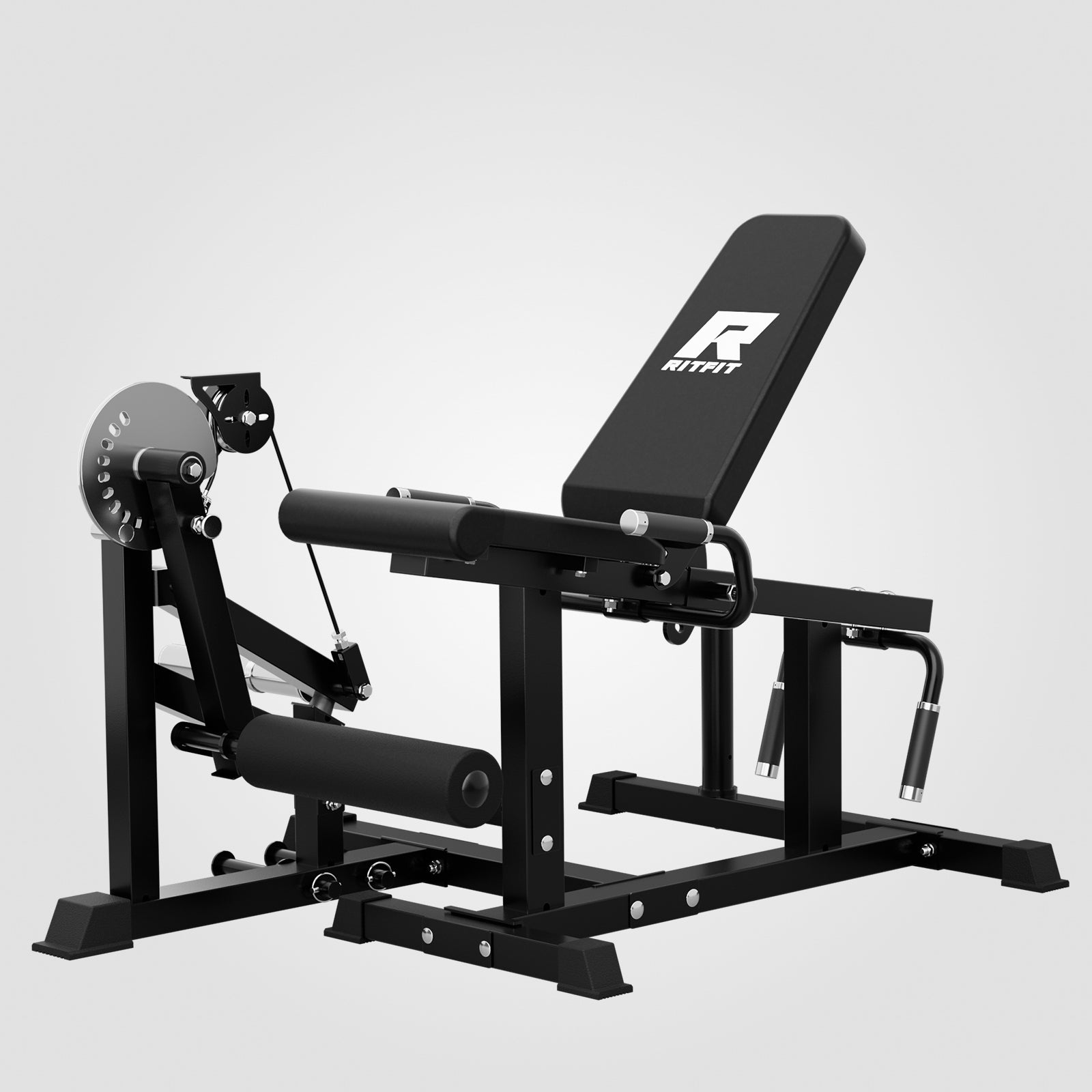Table of Contents
Training at home is one of the best gifts you can give yourself: no crowds, no commute, no waiting for equipment. But if you train alone in a garage, basement, or spare room, safety has to be a priority. And that’s exactly where the Smith machine shines.
I’ve helped countless home gym users build stronger, safer workout routines. The Smith machine is one of the most reliable tools for solo training because it gives you stability, predictable movement, and built-in protection even when you’re lifting heavy.
If you want true Smith machine home gym safety, a few good habits will make your setup even more secure and a lot more effective. Let’s walk through everything you need to know.
Why the Smith Machine Is One of the Safest Tools for Home Gyms
Smith machines are popular in home gyms for a reason. The guided bar path helps you stay balanced, the safety catches protect you from failed reps, and the machine allows controlled movement patterns that drastically lower injury risk.
For beginners, it builds confidence.
For intermediates training alone, it’s a spotter you can always count on.
For lifters in tight spaces or low ceilings, it offers more stability than a free-weight rack.
If you're shopping for a safe and compact setup, the RitFit Smith Machine collection (like the M1 PRO or BUFFALO systems) gives you guided tracks, adjustable safeties, and cable attachments, everything you need for a reliable home-gym hub.
Research indicates that fixed-path equipment like the Smith machine significantly reduces the requirement for stabilizer muscle activity, allowing the lifter to focus on prime mover force production with lower risk of loss of balance.[1]
Start With a Proper Setup
You can have the best Smith machine in the world… but if the setup is off, the lift won’t feel right.
Adjust the Bar Height
For squats: set the bar around mid-chest
For the bench press, the bar should rest at length from your locked-out position.
For rows: set it slightly above the knee.
Think of it this way: the bar should start where your joints feel relaxed, not stretched or cramped.
Set the Safety Stoppers
This is your built-in insurance policy.
For squats: safeties at just below your lowest depth
For bench: safeties just above chest level
For lunges: safeties at the lowest point of your range
Test the stopper height with an empty bar to make sure it catches you comfortably.
Find the Right Foot Position
Because the bar follows a fixed path, your feet must align with that path.
Too far forward = knee stress
Too far back = lower-back stress
Cue: keep your center of mass over your mid-foot.
Adjusting foot placement forward during Smith machine squats significantly reduces anterior knee shear forces compared to free-weight squats, making it a safer option for those with knee concerns[2].
Essential Smith Machine Safety Rules
Here are the habits that keep you safe and help you lift better.
Use a Controlled Tempo
Fast reps look cool… until they hurt your joints. Aim for: 2 seconds down, 1 second up. This protects your spine and knees while improving muscle activation. A 2017 meta-analysis revealed that controlling the eccentric (lowering) phase of a lift is just as important as the concentric phase for muscle hypertrophy, while simultaneously reducing momentum-based injury risk[3].
Always Re-Rack With Intention
At the end of a set, twist the bar fully into the hooks.
Don’t rush it.
Don’t “half-turn” it.
A clean lock-in prevents bar slips.
Load Plates Evenly
Keep both sides balanced and use collars.
Uneven loading strains the guide rods and throws off stability.
Maintain Your Machine
No matter if it's a RitFit M1 PRO or another model:
Every month, grease the guide rods.
Look at the bolts every two to three months.
Get rid of dust on the tracks
Check to see that the safeties move easily.
A machine that is clean and well-maintained is safer to lift.
Common Mistakes to Avoid
Mistake 1: Standing too far in front of or behind the bar
This makes your knees or back bend in strange ways.
How to Fix: Make sure your body moves with the bar path, not against it.
Mistake 2: Letting the bar take charge of you
Don't let the guided track make your body move in a bad way.
First, get into your stance, and then move through your natural range.
Mistake 3: Skipping warm-up
Cold joints + a fixed bar path = trouble.
Try a 3-minute warm-up:
- 20 bodyweight squats
- 20 hip hinges
- 10 pushups
- Light band rows
Systematic reviews have consistently shown that a dynamic warm-up improves power output and joint range of motion, which is critical when engaging with fixed-path equipment[4].
Mistake 4: Training to failure without safeties
Smith machines are safer than free weights, but not magic.
Use stoppers so you never get pinned.
Exercise-Specific Safety Tips
Let's look at the safety tips for the most common exercises on the Smith machine.
Smith Machine Squats
For a natural hip hinge, keep your feet a little in front of you.
Knees stay in line with toes
Use safeties just below the lowest point of your squat.
Keep your core tight the whole time.
Smith Machine Bench Press
Put the bench in a way that the bar lines up with the middle of your chest.
Keep your shoulders down and back.
Don't let your elbows flare too much.
Put safeties just above your chest.
Smith Machine Lunges / Split Squats
Step forward far enough so your front knee stays stable and aligned throughout the movement.
Keep your hips straight
Take your time and keep an eye on the depth.
Smith Machine Overhead Press
If your ceiling is low, switch to the seated press or the incline press.
For safe pressing:
Keep your ribs down
Don't let the bar move too far forward.
Safe Programming for Home Gym Lifters
Here’s how to progress safely without overdoing it or making preventable mistakes.
Start with Light (1–2 Weeks)
Before adding weight, spend time practicing the movement pattern along the guided bar path.
Slowly Add Weight
A good rule of thumb
If your reps are coming out smooth and controlled, add 5 to 10 pounds per week.
Use RPE or Reps in Reserve
When you feel like you could do one or two more reps with good form, stop your sets.
This lets you keep moving forward without getting hurt.
Research into "autoregulation" suggests that stopping sets with 1–2 repetitions in reserve (RIR) provides a similar stimulus to training to failure but with significantly less fatigue and lower injury potential[5].
Work out 2 to 3 times a week
You can use a Smith machine for full-body workouts or for splitting your upper and lower body.
Bonus: Home Gym Setup Tips
A few layout tweaks can make your training even safer:
Leave at least 2–3 ft of space behind and in front of the machine
Use rubber flooring for stability
Choose a compact model (like RitFit M1 PRO) if you’re in a tight room
If your ceiling is low, stick to incline and seated variations
Add a bench + cable attachments for complete full-body coverage
The more organized your setup, the safer you train.
If you have past injuries or medical conditions, consult a qualified professional before starting or modifying your training.
Final Thoughts
If you know how to use it right, the Smith machine can be one of the safest and most useful pieces of the fitness equipment in your home gym. If you have the right setup, smart habits, and stick to the same technique, you can lift with confidence, stay safe, and keep making progress every week.
If you're adding to or building a home gym, you can see all of the RitFit Smith machines here:
Train smart, stay safe, and enjoy the strength you gain at home.
References
- Schick EE, Coburn JW, Brown LE, et al. A comparison of muscle activation between a Smith machine and free weight bench press. J Strength Cond Res. 2010;24(3):779-784. doi:10.1519/JSC.0b013e3181cc2237
- Escamilla RF, Fleisig GS, Lowry TM, Barrentine SW, Andrews JR. A three-dimensional biomechanical analysis of the squat during varying stance widths. Med Sci Sports Exerc. 2001;33(6):984-998. doi:10.1097/00005768-200106000-00019
- Schoenfeld BJ, Grgic J, Ogborn D, Krieger JW. Strength and Hypertrophy Adaptations Between Low- vs. High-Load Resistance Training: A Systematic Review and Meta-analysis. J Strength Cond Res. 2017;31(12):3508-3523. doi:10.1519/JSC.0000000000002200
- Fradkin AJ, Zazryn TR, Smoliga JM. Effects of warming-up on physical performance: a systematic review with meta-analysis. J Strength Cond Res. 2010;24(1):140-148. doi:10.1519/JSC.0b013e3181c643a0
- Refalo MC, Helms ER, Hamilton DL, Fyfe JJ. Influence of Resistance Training Proximity-to-Failure, Determined by Repetitions-in-Reserve, on Neuromuscular Fatigue in Resistance-Trained Males and Females. Sports Med Open. 2023;9(1):10. Published 2023 Feb 8. doi:10.1186/s40798-023-00554-y
This blog is written by the RitFit Editorial Team, who have years of experience in fitness industry and marketing. All content is based on our hands-on experience with RitFit equipment and insights from our users.


